4 Main Baseboard Styles: Choosing & Customizing
Author: Rick Worst | Editor: Omar Alonso
Review & Research: Jen Worst & Chris Miller
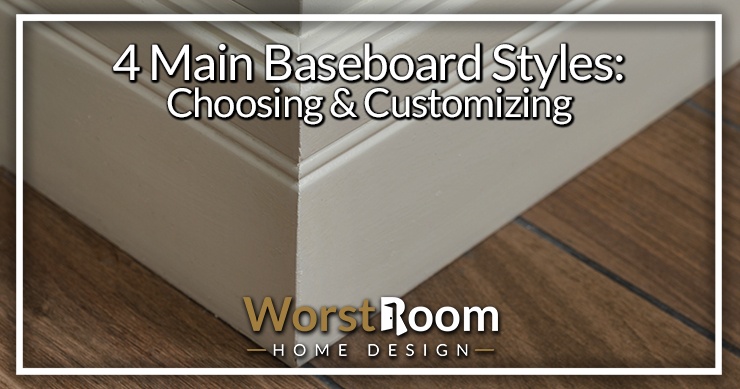
Setting up a beautiful interior requires an eye for detail. As an essential part of the look and feel of a room, baseboard styles help create the perfect atmosphere. Most baseboards are placed between the floor and the wall, providing a neat finish.
Baseboards come in various shapes and sizes, making them ideal for almost any home design. For an elegant look, homeowners can choose from a wide variety of classic styles, such as Victorian, Mission, or Federal. Those looking for a modern touch can explore baseboard options like Craftsman, Contemporary, or Mid-Century.
Keep reading to learn more about the different types of baseboard trim available and how to choose the perfect one for your home.
The 4 Main Baseboards Styles
Baseboards come in various shapes and sizes, making them ideal for home design. Here are four popular baseboard styles:
Victorian Baseboard Style
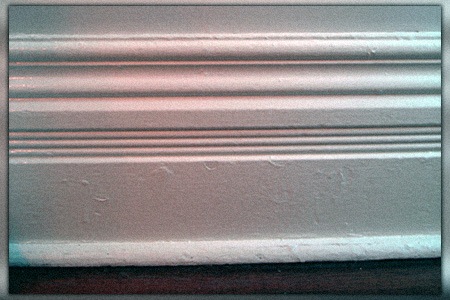
The style adds a classic touch and is often used in traditional homes. Victorian baseboards have ornate designs with rounded edges and a wide profile that adds elegance to any room.
Here are key features that define the Victorian baseboard style:
- Ornate detailing: The style contains intricate designs with ornate details like beveled edges.
- Textured finish: The baseboard has an embossed textured finish. You can also paint it to match your walls.
- Wide profile: Victorian baseboards have a wide profile, which makes them perfect for larger rooms or homes with a lot of detail.
- Smooth, rounded edges: The edges are soft and rounded, giving the baseboard a more refined look.
The Victorian baseboard trim profiles are an excellent choice if your home features a classic or traditional design.
Mission Baseboard Style
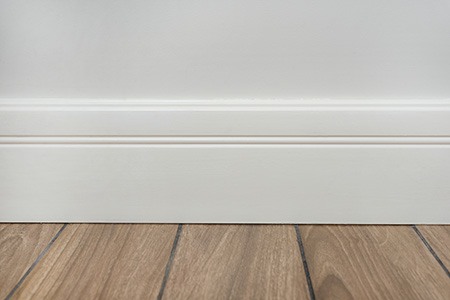
The mission style is perfect for homes with a contemporary look. It has clean lines and a slim profile that adds modern flair to any room.
Here are the key features of the mission-style baseboard:
- Minimal detailing: The style has fewer details and a more straightforward design than Victorian baseboards. It has clean lines and a sleek look.
- Smooth finish: The baseboard is usually painted in a gloss or semi-gloss finish, which gives it a modern look.
- Slim profile: Mission-style baseboards have a narrow profile that is perfect for smaller rooms or homes with minimal detail.
- Straight edges: The edges are straight and angular, which creates a more modern feel.
Mission baseboard molding styles are an excellent option if you prefer a contemporary look.
Federal Baseboard Style
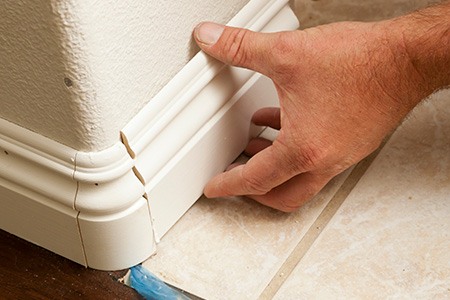
The Federal style of baseboards adds elegance to any room. It has a wide profile and ornate details that create an air of sophistication.
Here are the key features of the Federal baseboard style:
- Intricate detailing: The style has intricate details, including beveled edges and grooves in the wood.
- Textured finish: The baseboard has an embossed finish that gives it a luxurious look. You can paint it any color you like.
- Wide profile: Federal baseboards have a wide profile, making them perfect for larger rooms or homes with lots of detail. However, it can still be used in smaller rooms.
- Ornate, rounded edges: The edges of the baseboard are slightly ornate and have a rounded shape.
Federal baseboard styles are perfect for homes with a traditional or classic look with baseboard heights that aren't overly tall or dramatic.
Craftsman Baseboard Style
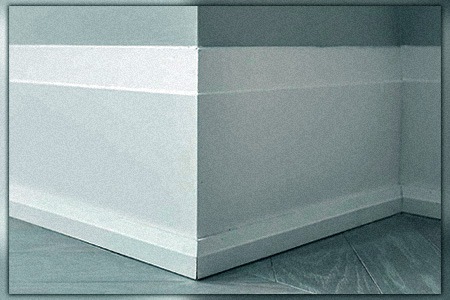
The craftsman style of baseboards adds a touch of rustic charm to any room. It has a wide profile and simple details that make it stand out.
Here are the key features of the craftsman-style baseboard:
- Simple detailing: The style has fewer details and a simpler design than Victorian or Federal baseboards. It has clean lines and a more rustic look.
- Textured finish: The baseboard has a textured finish that gives it an extra character. If your home's architectural style is rustic, this baseboard style would be a great choice.
- Wide profile: Craftsman baseboards have a wide profile, making them perfect for larger rooms or homes with a lot of detail.
- Straight edges: The edges are straight and angular, which adds to the rustic look of the baseboard.
Whether you're looking for a classic or rustic feel, a craftsman-style baseboard can add the perfect touch to your home. You can hardly go wrong with these baseboard molding types.
No matter what baseboard style you choose, consider the features and how they will fit in with the rest of your home. Take the time to research each of the baseboard options, and you'll be sure to find a style that works for your space.
Working with a professional can also help you make the best decision for your home.
Common Baseboard Materials
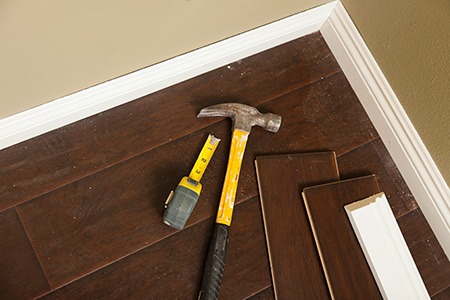
Your options for baseboard materials are nearly limitless and are similar to the ones found in all the types of crown moulding. However, you need to consider the material and features to get the perfect fit. Here are vital considerations you need to make when selecting a baseboard material:
- Durability: Depending on the area you're installing your baseboards in, you'll need one that is durable and can withstand wear and tear.
- Cost: Baseboards come in various materials, each with its associated cost.
- Style: The material you choose should fit your home's overall style.
Note that you won't be able to tell visually from the outside what material you chose for your baseboard, so really consider durability and cost as your main concerns. Here are the most popular baseboard materials used in homes today:
Wood
Wood is a classic choice for all baseboard styles and is available in various styles. You can stain or paint it, depending on the look you're going for.
Wood baseboard materials key features:
- Durable: Wood is a strong and durable material that can last for years.
- Customizable: You can easily customize the wood baseboard to fit your home's style.
- Cost-effective: Wood is generally an affordable material for baseboards.
Consider where you source your wood, as you want to ensure it is of high quality.
MDF Medium Density Fiberboard (MDF)
MDF is engineered wood made from recycled wood fibers and wax. It is more affordable than solid wood but can still be painted or stained to match the look of your home.
MDF baseboard materials' key features:
- Durable: MDF is a strong and sturdy material that can last several years.
- Cost-effective: The cost of MDF is much lower than solid wood, making it a budget-friendly option.
- Easy to install: MDF is lightweight, making it easy to install.
If you're on a budget but still want a quality baseboard, MDF is an ideal option.
Vinyl
Vinyl baseboards are made from a plastic or PVC material and are an inexpensive option for any room. They don't require painting, as the material is colored throughout.
Vinyl baseboard materials' key features:
- Lightweight: Vinyl is lightweight and easy to install.
- Cost-effective: Vinyl is an affordable baseboard option.
- Easy to maintain: The material requires very little maintenance and can be easily cleaned.
Vinyl types of baseboards are an excellent option for any budget-conscious homeowner looking for an easy install.
Hardwood Like Mahogany
Hardwood is a classic choice for baseboards and is available in various styles. You can stain or paint it to match the style of your home.
The hardwood baseboard materials' key features include:
- Elegant look: Hardwood offers an elegant look that will add sophistication to any room.
- Cost: Though slightly more expensive than other materials, hardwood is still a cost-effective choice in the long run.
- Durability: Hardwood is a strong and durable material that can withstand wear and tear.
Note there are numerous types of hardwood, so be sure to research which one is right for your home. Generally, mahogany is popular due to its stunning color and finish.
What Style of Decor is Your Home Decorated In?
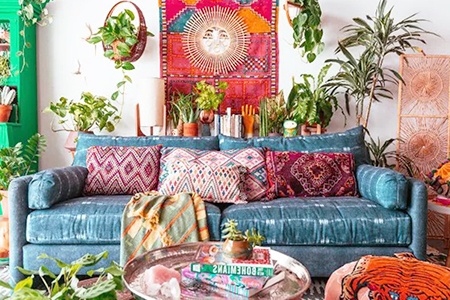
This is the question to ask yourself before you select from one of the baseboard styles above. Consider the following suggestions:
- Bohemian: Curved baseboards with ornate stylings work well with a bohemian decor.
- Farmhouse: A casual farmhouse decor is better suited to simple, non-rounded baseboards.
- Traditional: Bold baseboards that are thicker and taller work well with traditional homes.
- Shabby Chic: The more curved surfaces a baseboard has, the better for shabby chic decor.
- Industrial: This vintage style works well with flatter surfaces with hard angles rather than curved.
From among the styles above you can most closely match your own decor and then search for images online to find something that really stands out to you and screams "I could have that in my home and be satisfied."
One way to achieve some of these looks, if you can't find complete boards styled the way you want, is to use moulding, trim, or crown moulding alternatives to create the rounded or stepped looks of each style. You may use quarter round vs. shoe moulding, add flat moulding, and more techniques to create the custom style you want.
What are Baseboards?
Baseboards are a type of trim that covers the gap between the floor and the wall. They also help protect walls from damage caused by furniture, shoes, and vacuums.
Most contractors install baseboard trim types after painting the walls. It allows you to paint them in a color that complements the walls and flooring.
You can replace the baseboards in your home if they become damaged or outdated. Replacing them is a relatively easy task that can easily update the look of any room.
What Are Baseboards Used For?
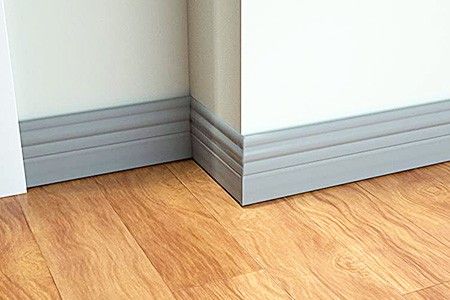
Most property owners use baseboards to protect walls from scuffs, scratches, and dirt. You can also use them to add architectural interest to a room or to cover imperfections in the walls.
In addition, baseboard trim styles provide a finished look to any room and can help hide gaps between the floor and the wall. This is the true purpose of a baseboard.
Baseboards can also help prevent water damage to the walls due to moisture. For instance, they can help keep water from seeping in and damaging the walls in a bathroom or kitchen.
Whether you're using them for practical or aesthetic reasons, baseboards can complete the look of any room. It's essential to consult with a contractor to discuss the best options for your home.
Choosing Suitable Baseboard Styles for Your Home
Consider each baseboard's material, features, and cost to get the ideal fit. With the right baseboard style, you can instantly improve your home's overall look and feel.
Improving every detail of your home is essential to create a unique and comfortable environment. Baseboard styles can make or break the entire look of your home, so it's essential to choose the perfect style for your space.



